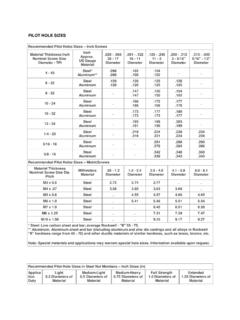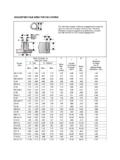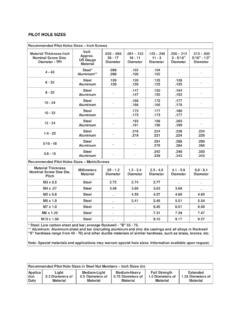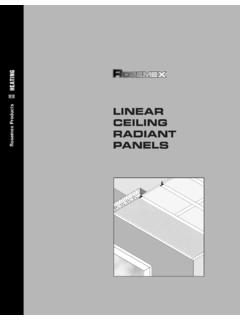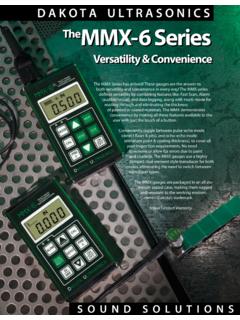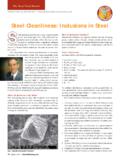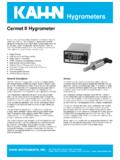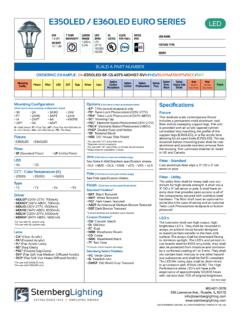Transcription of SCREW POINT TYPES - engineeredpartsinc.com
1 SCREW POINT TYPES Tapping Screws (Type A, AB, B) Type A POINT : A thread forming SCREW for use in thin metal .015 to .050 thick. Used with drilled, punched or nested holes in sheet metal, resin impregnated plywood, asbestos combinations, among others. Not recommended for new design. Type AB POINT : A thread forming SCREW combining locating POINT of Type A with thread size and pitch of Type B. Normal limitations of type B apply. Type B POINT : A thread forming SCREW for use in heavier metal .050 to .200 thick. Larger root diameter with finer thread pitch for light and heavy sheet metal non - ferrous castings, plastics, impregnated plywoods, asbestos combinations, and other materials. Thread Cutting Screws (Type 1, 17, 23, 25, F) Type 1 POINT : A thread cutting SCREW with single flute for general use. Produces a fine standard machine SCREW thread for field replacement. Type 17 POINT : A thread cutting SCREW for wood with a coarse tapping SCREW thread and a special long sharp POINT fluted to capture chips.
2 Type 23 POINT : A thread cutting SCREW in the fine thread series offering maximum thread cutting area and excellent chip clearing, with minimum tightening torques. Type 25 POINT : A thread cutting SCREW similar to type 23 POINT except with coarse Type B thread. For plastics and other soft materials with large chip clearing and cutting edges. Type F POINT : A thread cutting SCREW with machine SCREW thread with blunt tapered POINT , having multi - cutting edges and chip cavities. For heavy gauge sheet metal, alu - minum, zinc and lead die castings, cast iron, brass and plastic. Thread Forming Screws (Type C, CA, Tri-Round, Lo-Driv) Screws for Plastic (Tri-Round, Round) Type C POINT : A thread forming SCREW with either coarse or fine pitch machine SCREW thread and blunt tapered POINT . Eliminates chips and permits replacement with standard SCREW in the field. Higher driving torque required. Usable in heavy sheet metal and diecastings.
3 Type CA POINT : A thread forming SCREW with either coarse or fine pitch machine SCREW thread. Same as Type C except with a Gimlet POINT . The locating POINT works better than Type C where holes between two adjoining pieces of sheet metal may be somewhat misaligned. Tri-Round: A thread forming SCREW in mostly coarse machine SCREW threads. Three vertexes perform a roll - forming process to form mating threads. Much better thread forming than Type C or CA, and drives with less torque. Lo-Driv: A thread forming SCREW in mostly coarse machine SCREW threads. The POINT and body design requires low end - load for starting and low drive torque for seating. The full 360 degree body above the POINT provides excellent strip-to-drive ratios.
